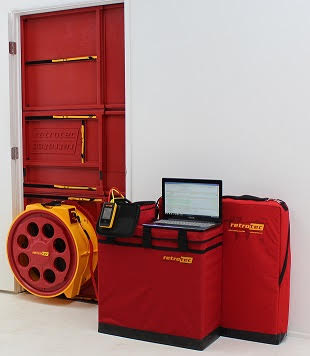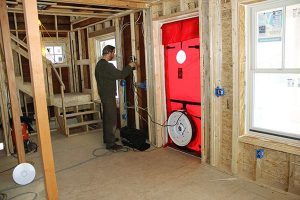Blower Door Air Tightness Testing
List of Blower Door Air Tightness Testing services in your area.
Scroll down to visit Air-tightness technicians in your area.

Blower Door Test Equipment
Air tightness or air pressure testing is now a mandatory requirement under current revised building regulations. these regulations came into effect on January 2008. The Blower Door Air Tightness Test costs can be quite high. Therefore, you should ensure that the test is carried out to the correct standards. You can make sure of this by checking:
- If the Air Tightness Blower Door Testing technician is registered with the NSAI Certified Air Tightness Tester Scheme
- But also make sure the Blower Door Test Equipment, used by the tester, is properly calibrated. The Blower Door Test Equipment should have calibration certificates. Check the expiry date on these certificates.
A brief explanation of air tightness in buildings
The Air Tightness of Your Home is the degree with which uncontrolled air can be prevented from entering or exiting the warm areas of your dwelling. Air leakage can occur in areas such as walls, floors and roofs. Air should only be permitted to enter your home through designated ventilation units. In order to determine the air tightness of a building a Blower Door Air Tightness Test is performed on the warm areas of the building. Warm areas are the areas in your home surrounded by walls, floors, the roof, insulation materials and airtight membranes. During this test all ventilation openings are sealed.
Importance of Blower Door Test
The main reason for doing a Blower Door Air Tightness Test in accordance with the Building Regulations is to ascertain the overall air permeability of a building. It is a mandatory requirement for all new domestic dwellings to achieve a certain level of Air Tightness. The minimum requirements for measured air permeability values is as follows:
- Not greater than 7 m³/hr/m² at an induced test pressure of 50Pa - for a Standard House
- Not greater than 0.6 m³/hr/m² at an induced test pressure of 50Pa - for a Passive House
For a precise guide to the important aspects of Building Envelope Air Permeability refer to Building Regulations 2011 TGD part L pages 18, 23 and 29. A low air permeability dwelling is an energy-efficient one. Think of it this way, say your house is at the lowest possible compliance standard. This means every hour your house will lose 7 m³ of warm air for every m² of building envelope. This is a significant volume of air leakage. In other words, you are losing all this warm air from the outer walls, the roof and the ground floor. The losses, however, will not be uniform. They will occur typically in cracks in the walls and floors and badly fitted doors and windows.

Blower Door /Air-tightness Test
Now here is the crucial factor those air leaks are being replaced by equal amounts of cold air during the winter periods and have to be replenished by your home heating system to maintain a constant temperature.
Advantages of an Airtight Home
- Reduction or the complete elimination of cold draughts.
- Improved fresh-air control.
- Reduction in Heat Loss.
- Improvement in Energy Rating.
Disadvantages of an Airtight Home
- If vents are not working properly then there can be a noticeable reduction in the quality of the air inside your home.
- Too hot in Summer if windows and vents have to be kept closed for any reason.
- Reduction in Heat Containment.
- A Reduced Energy Rating.




